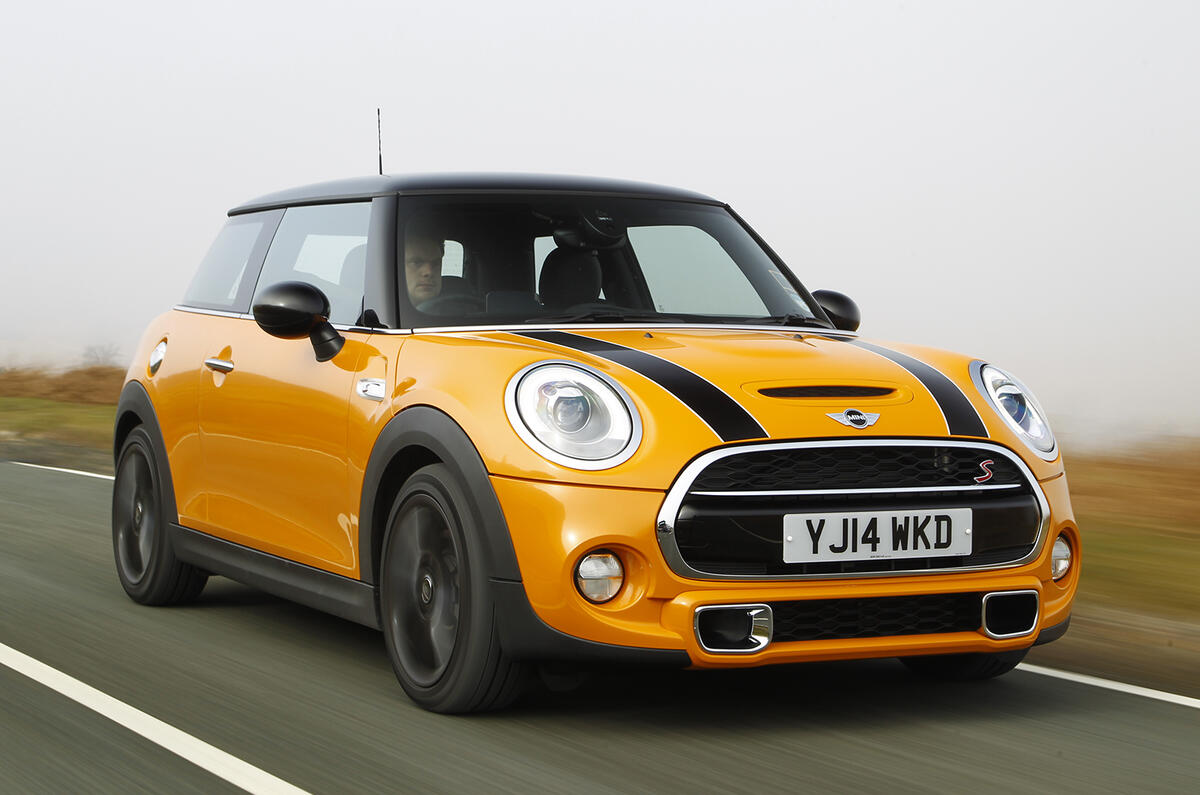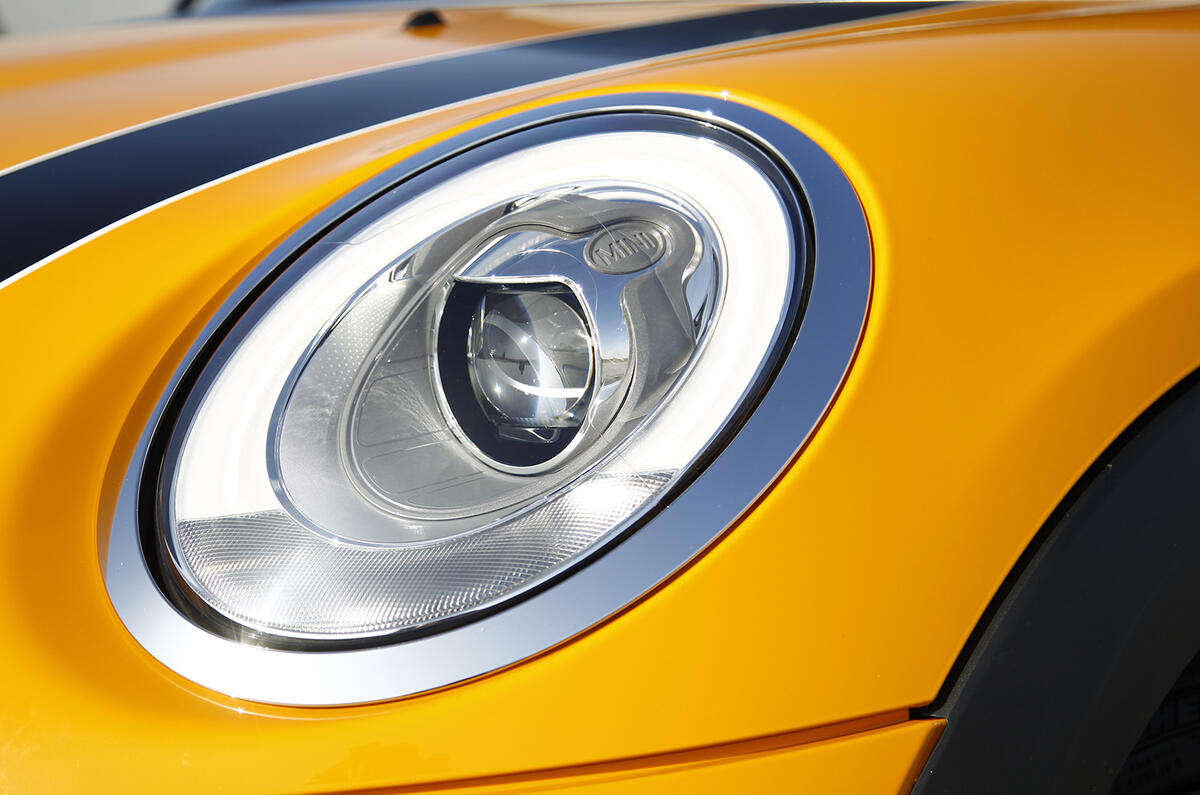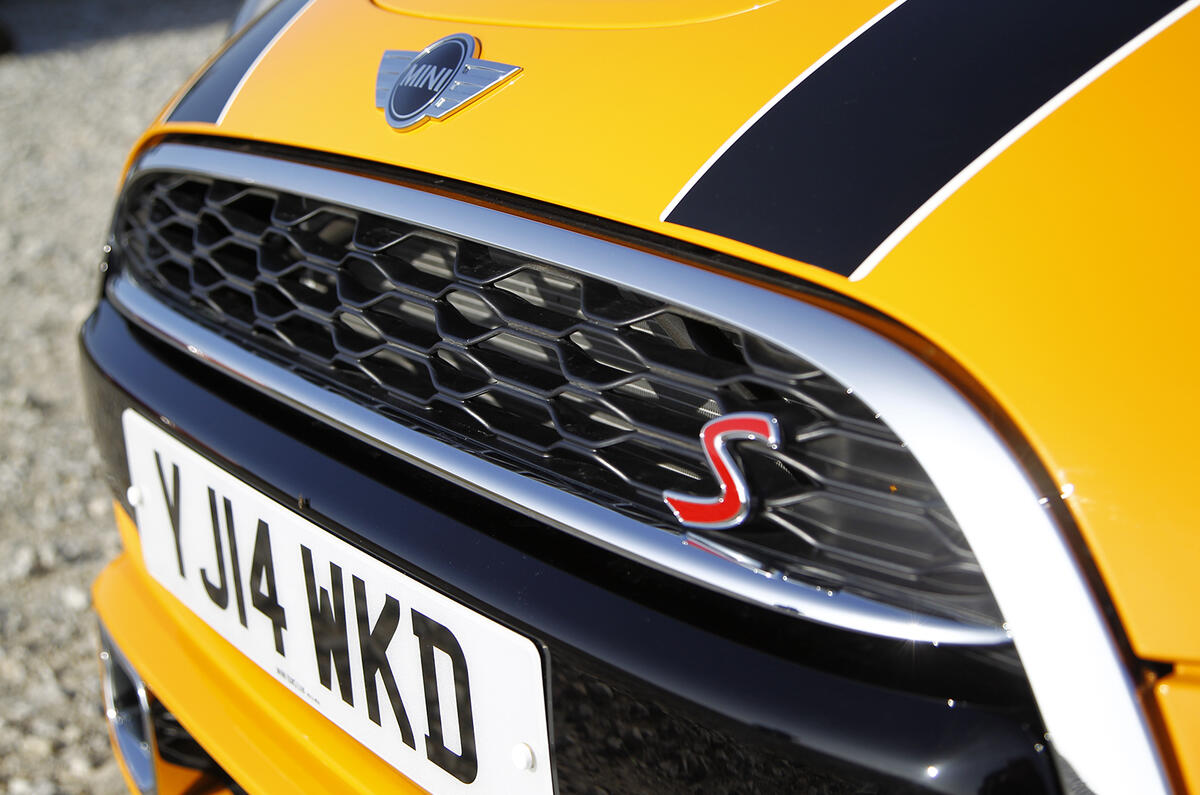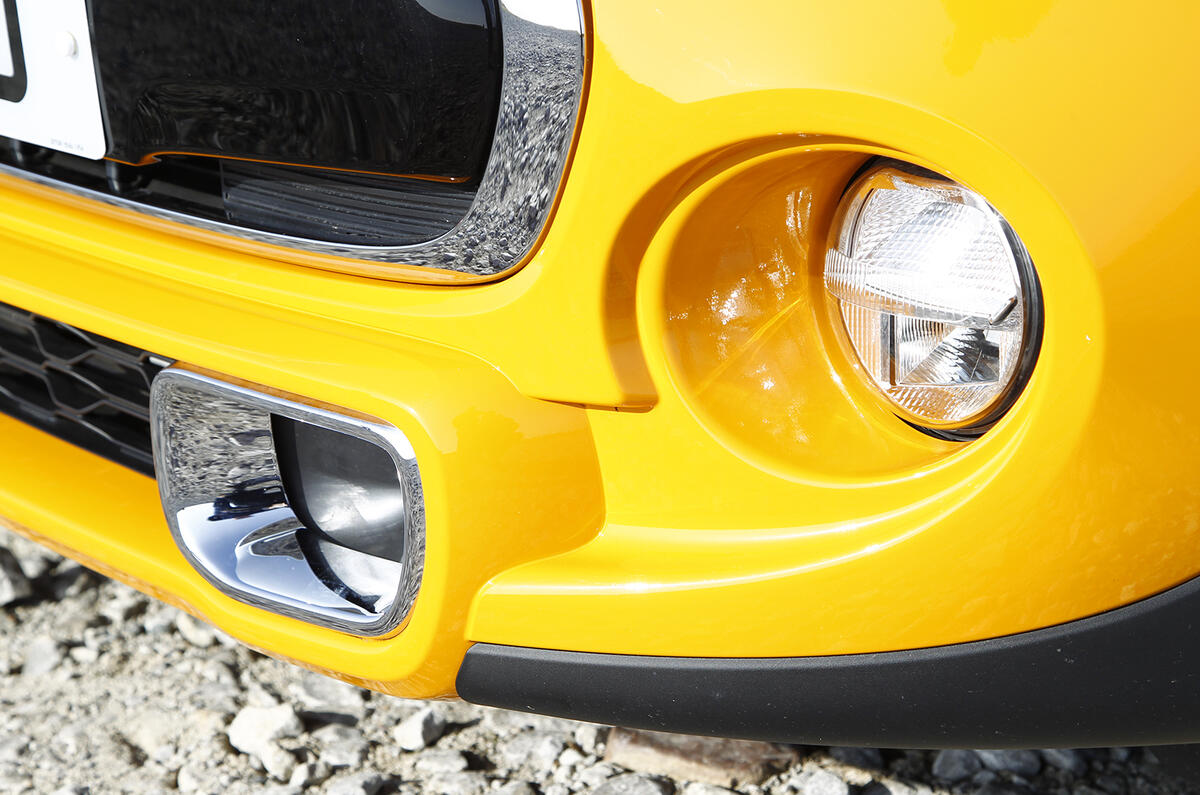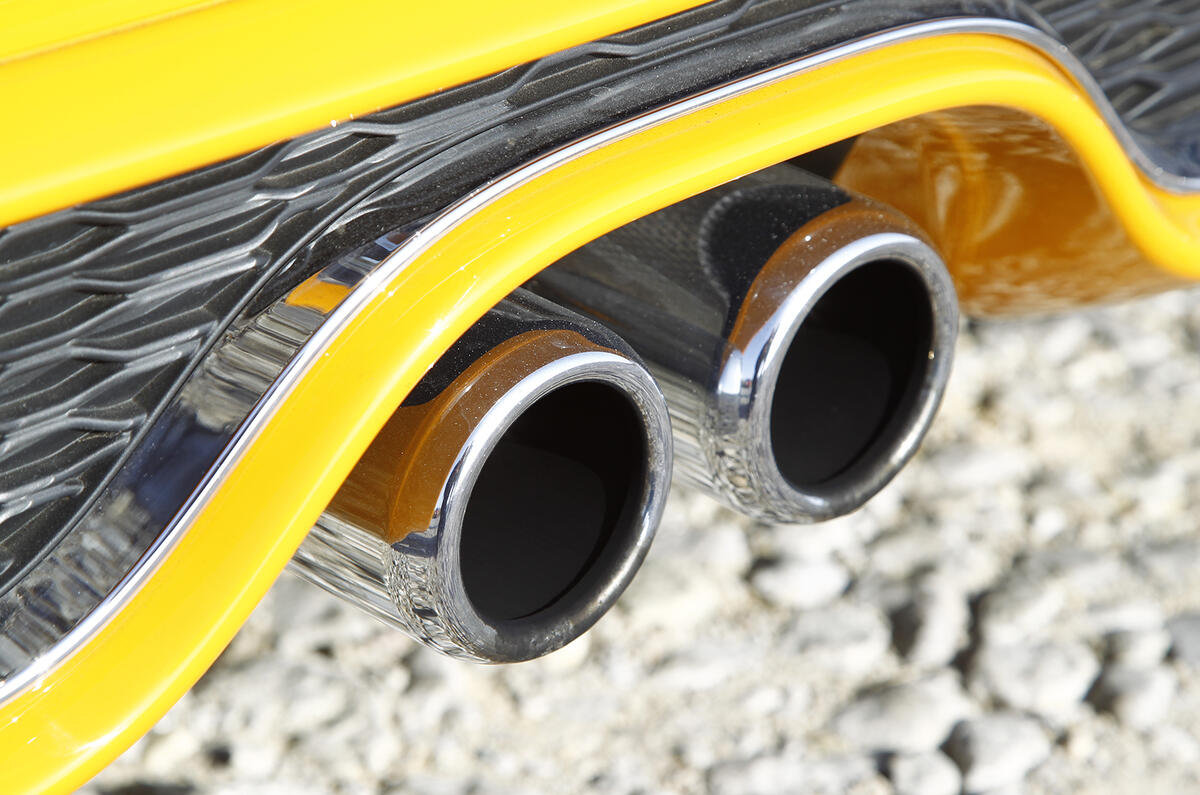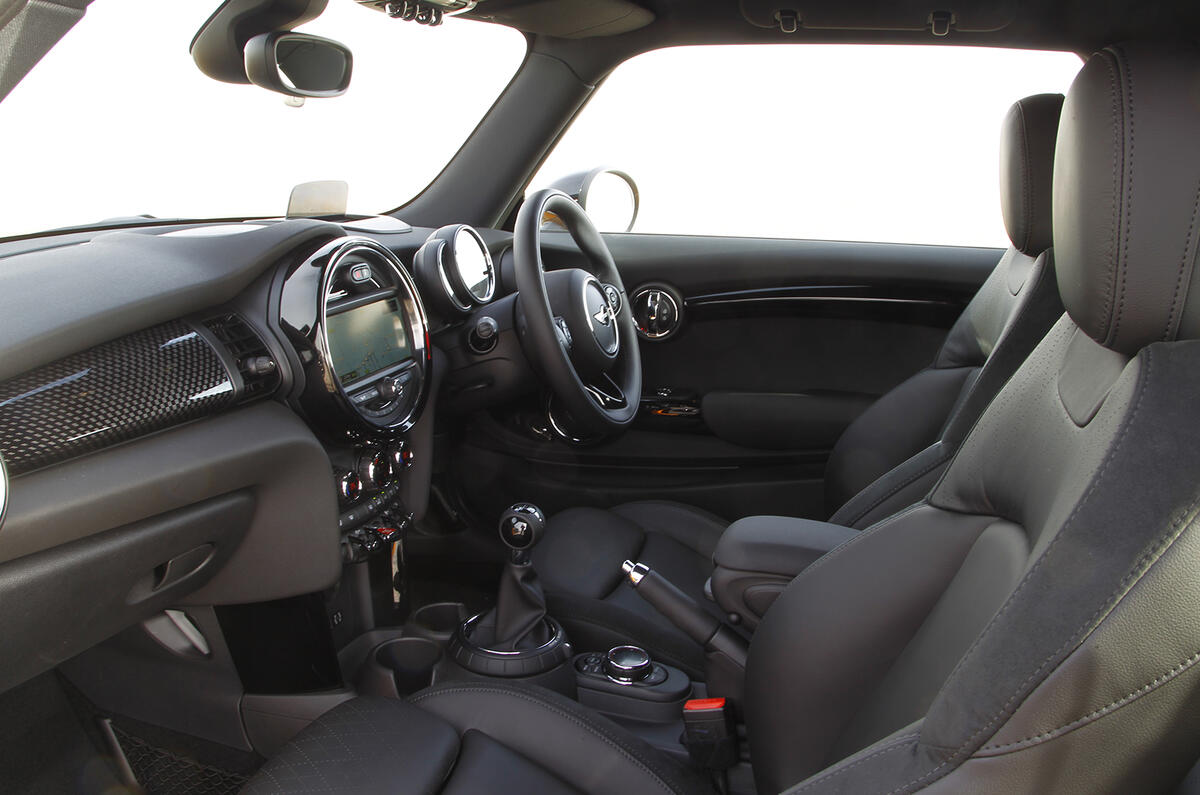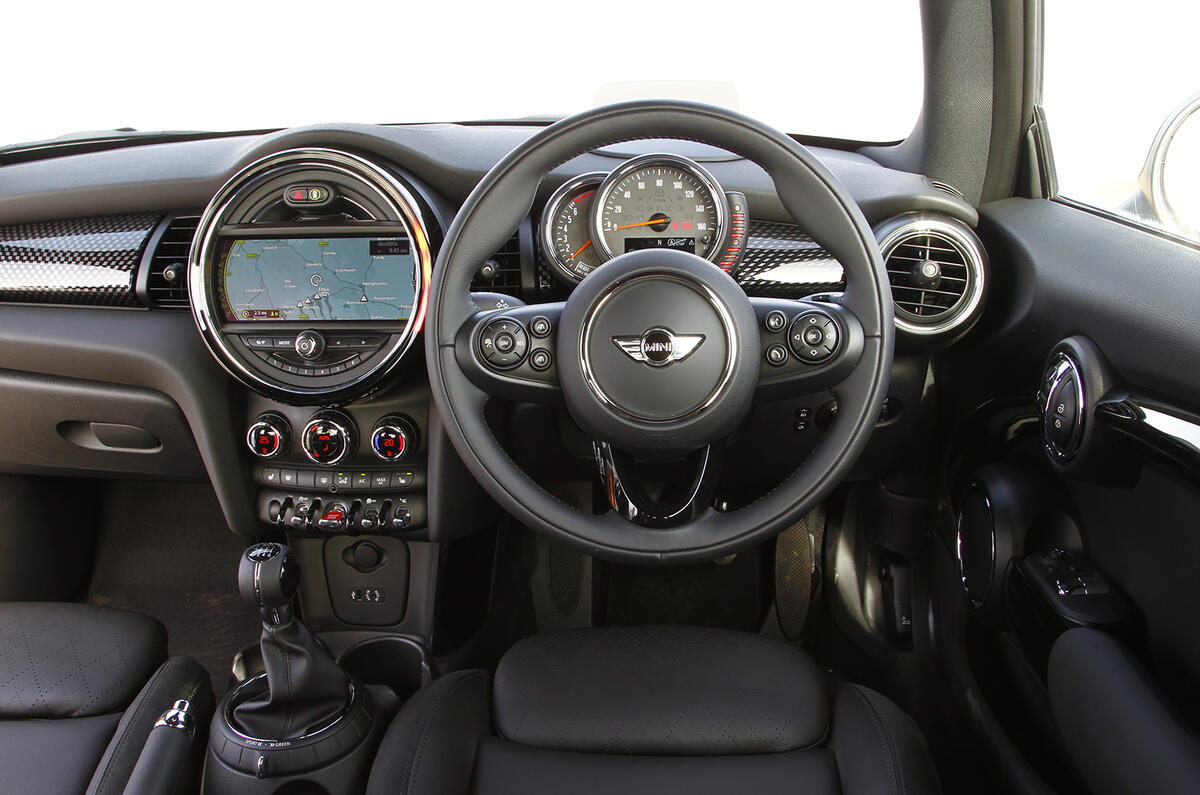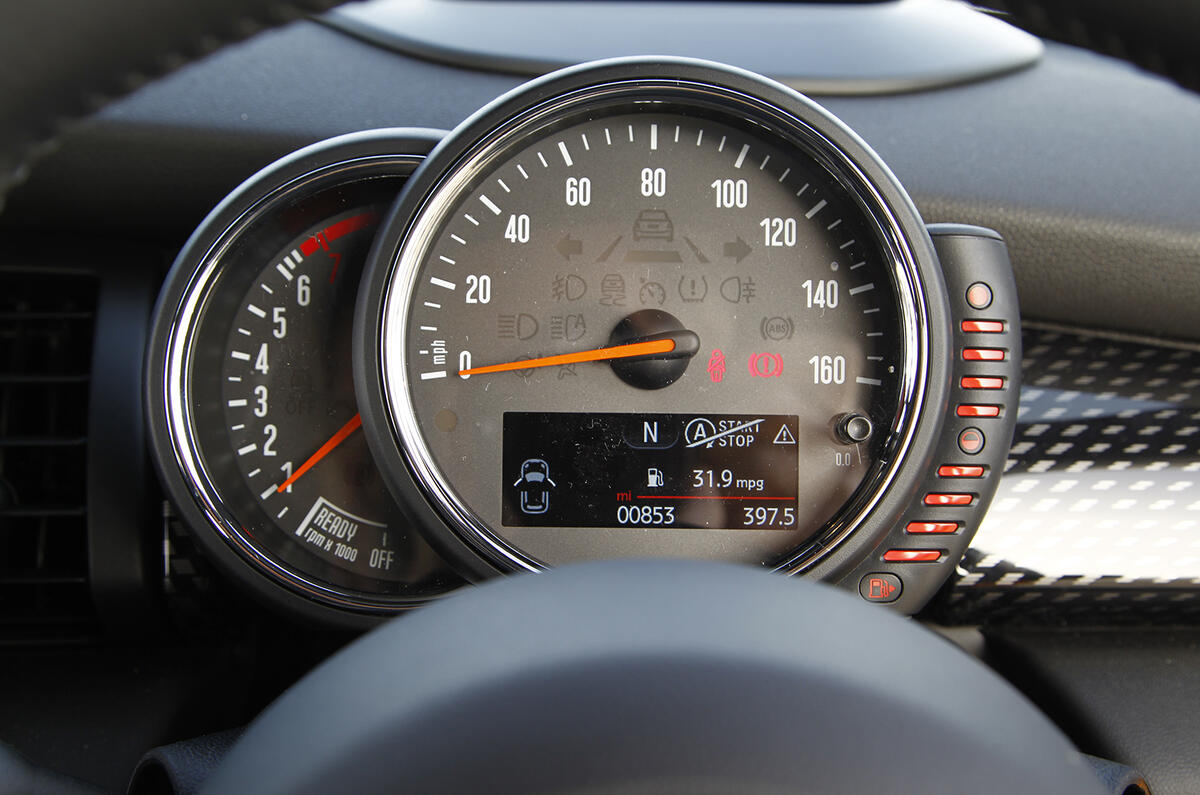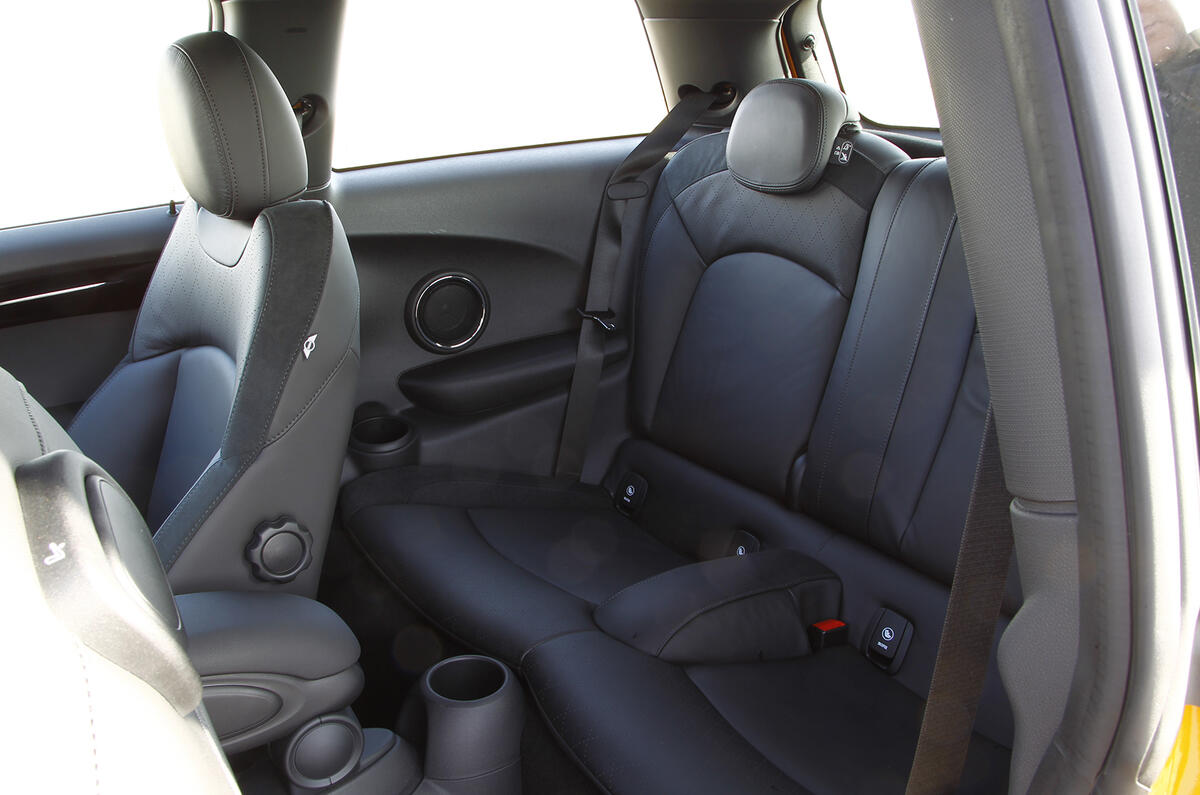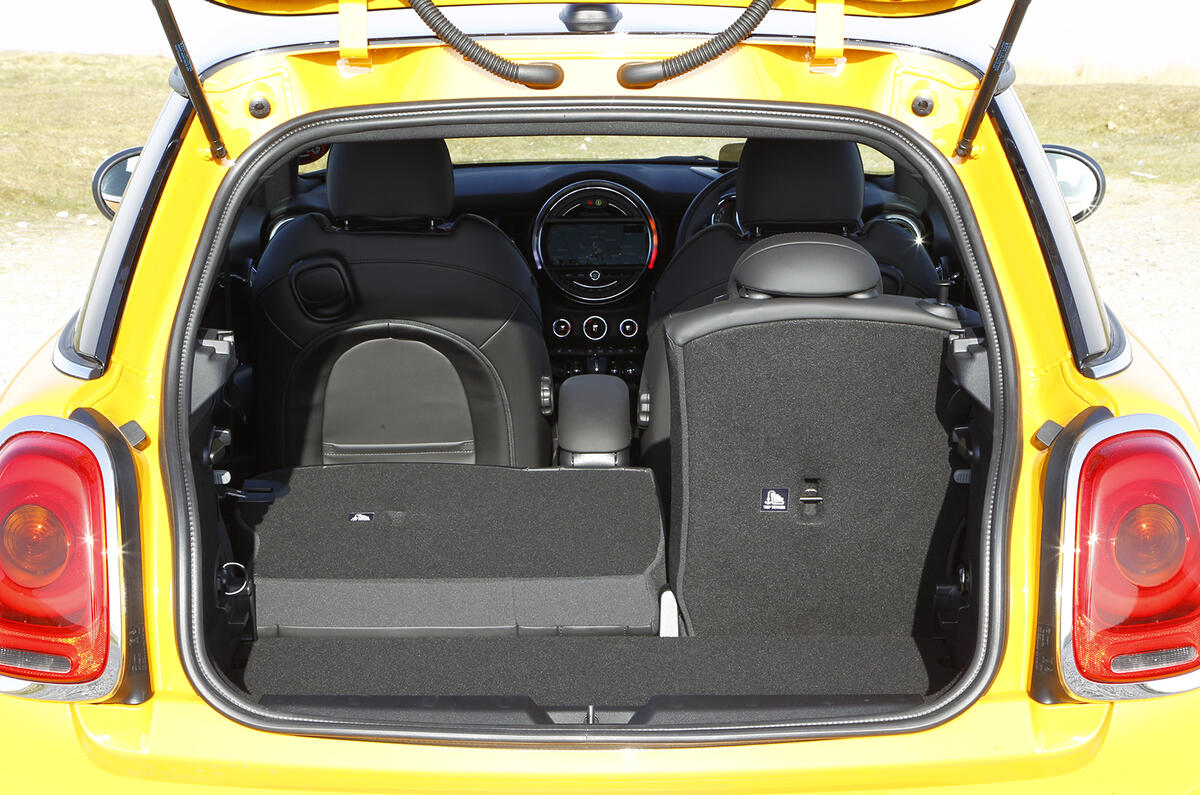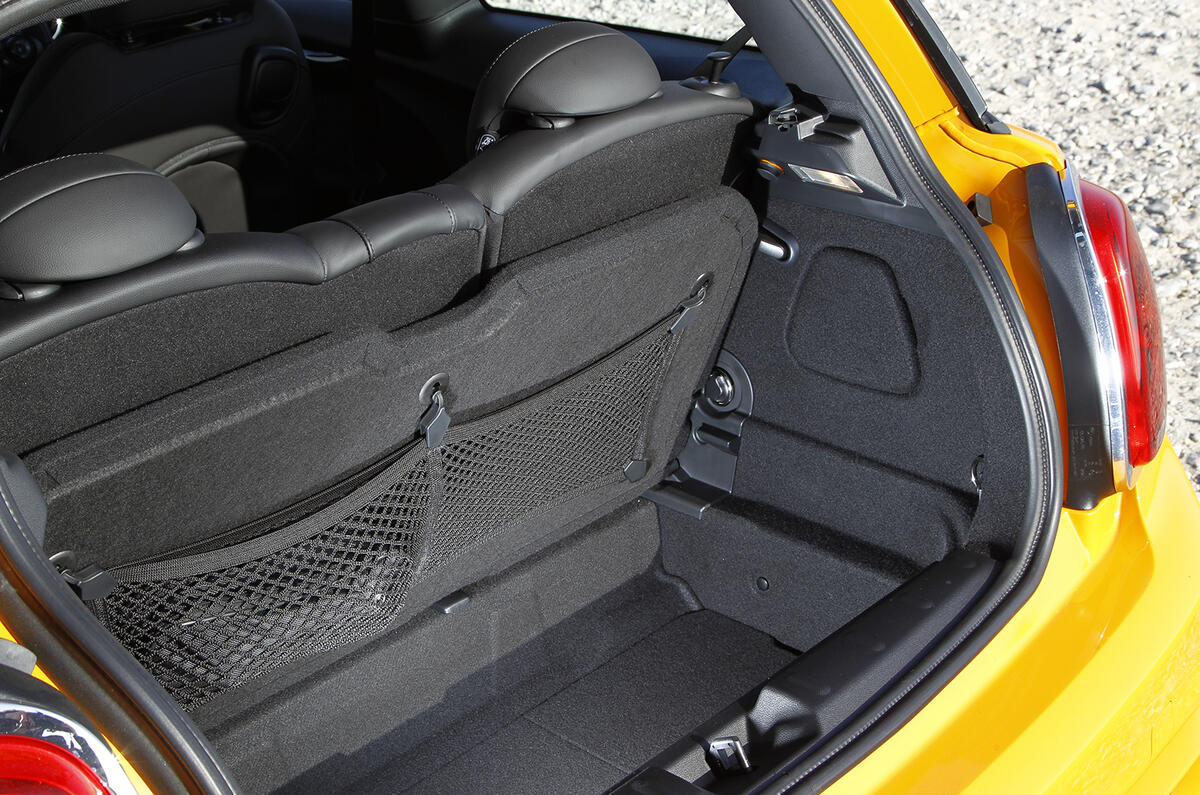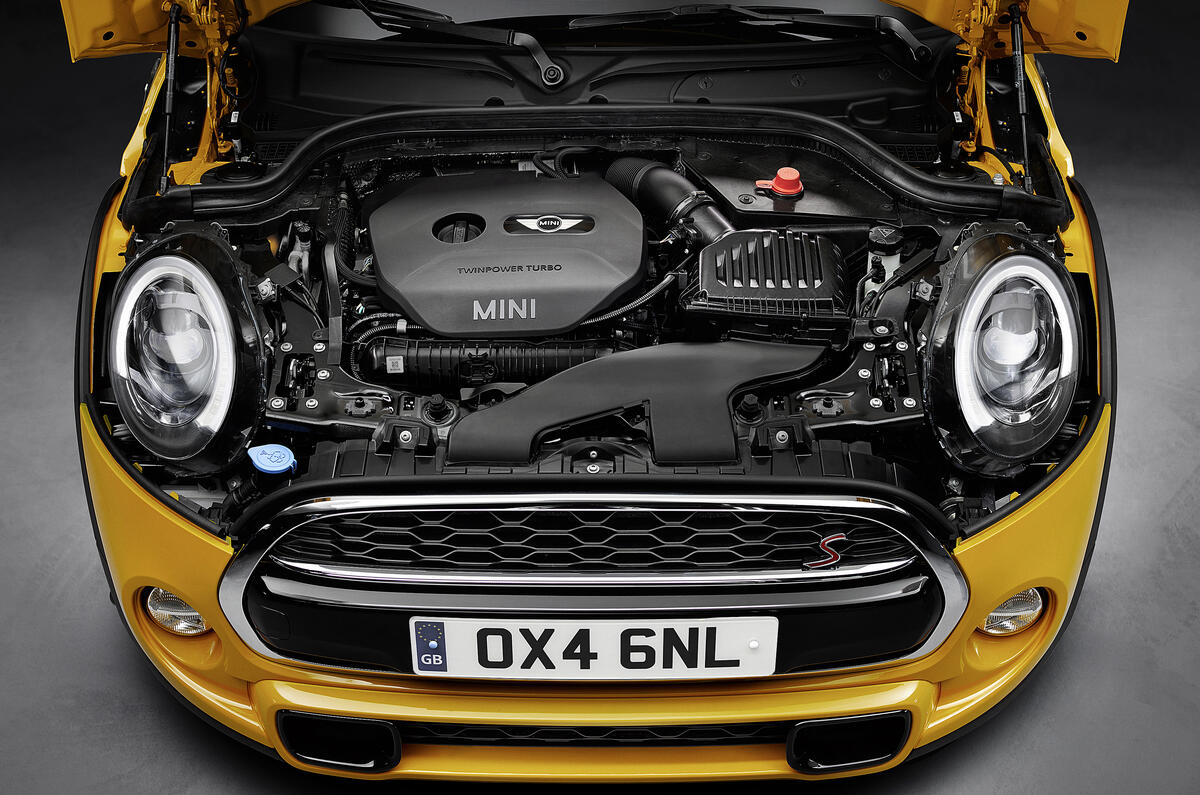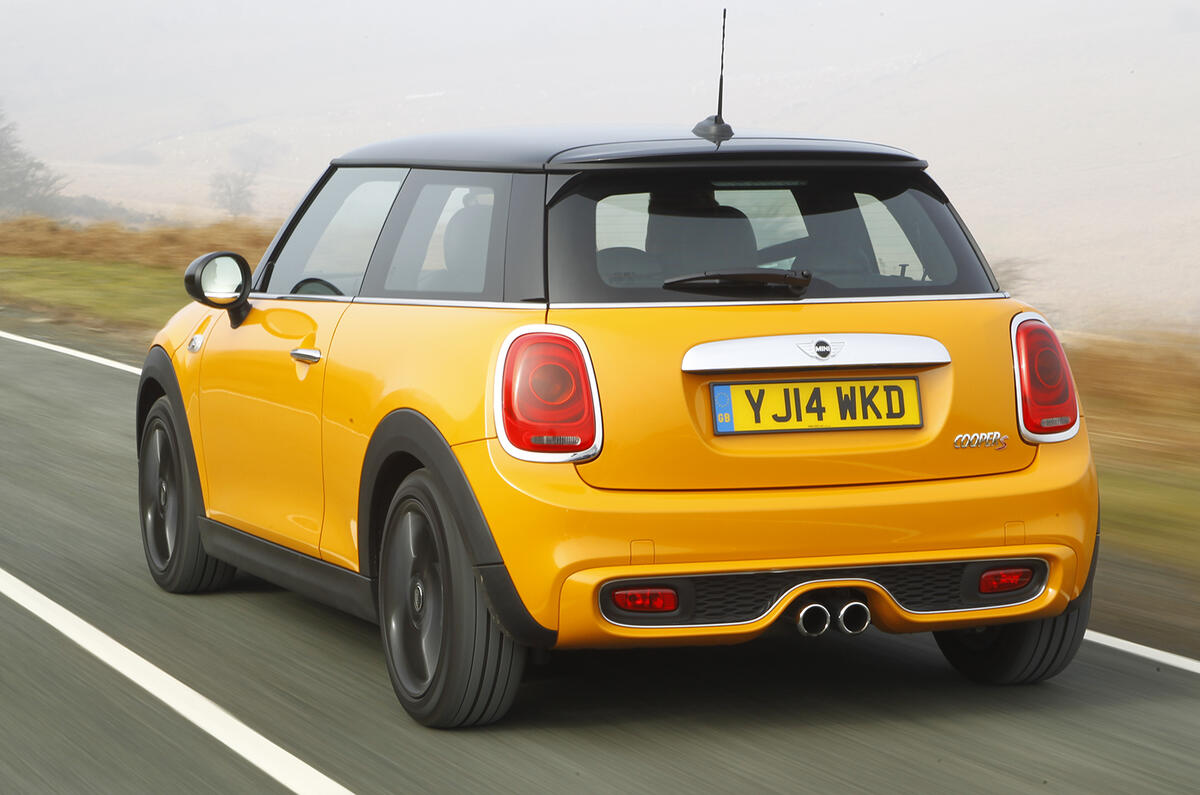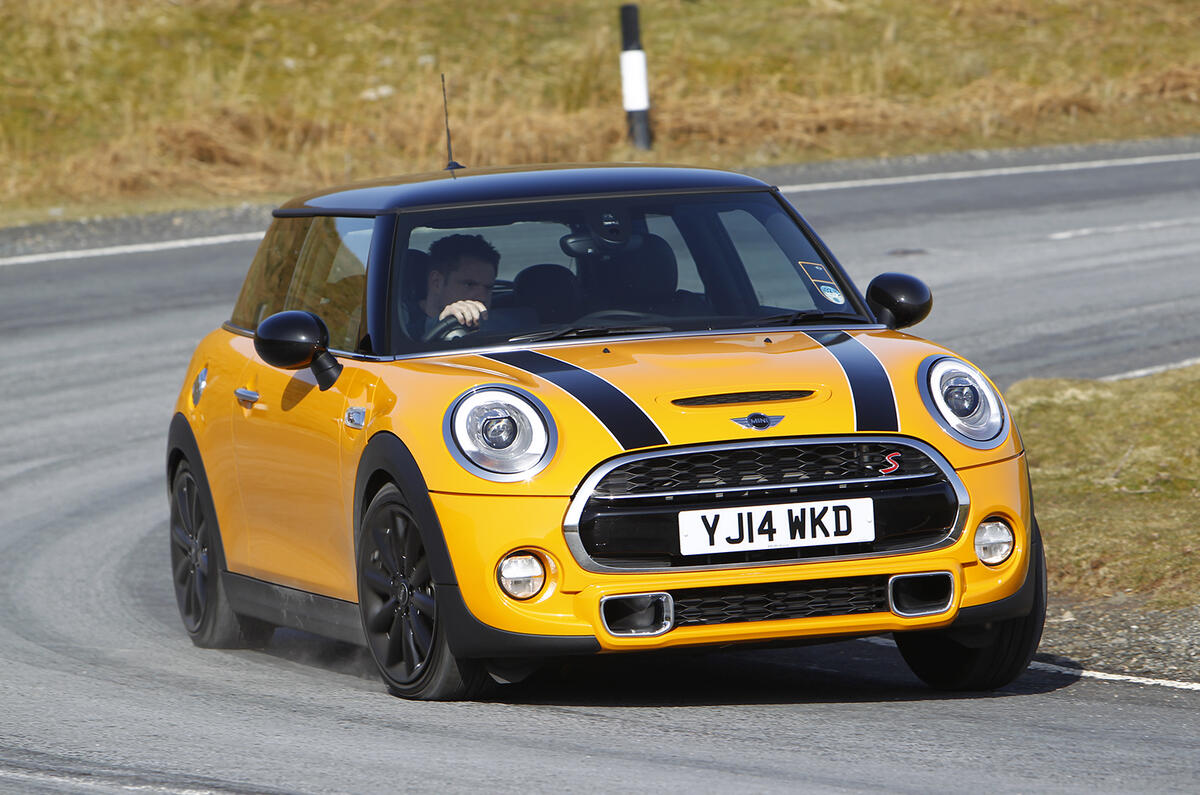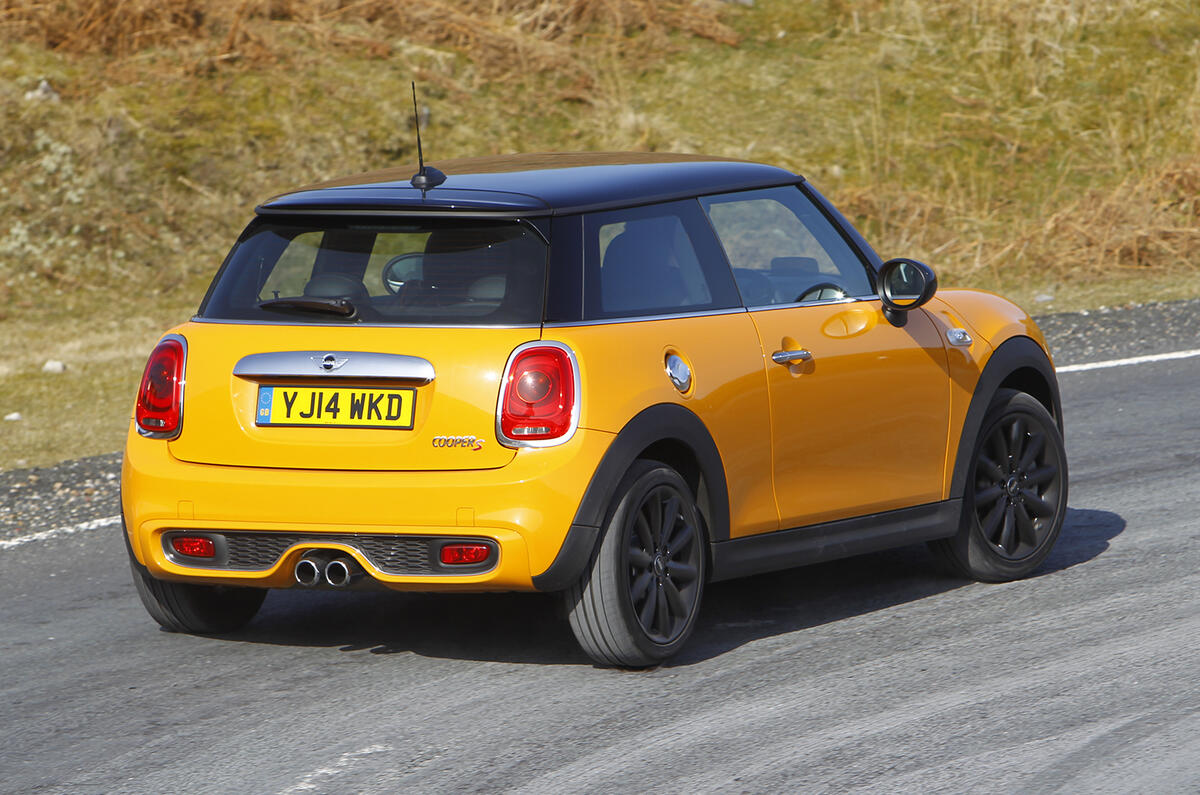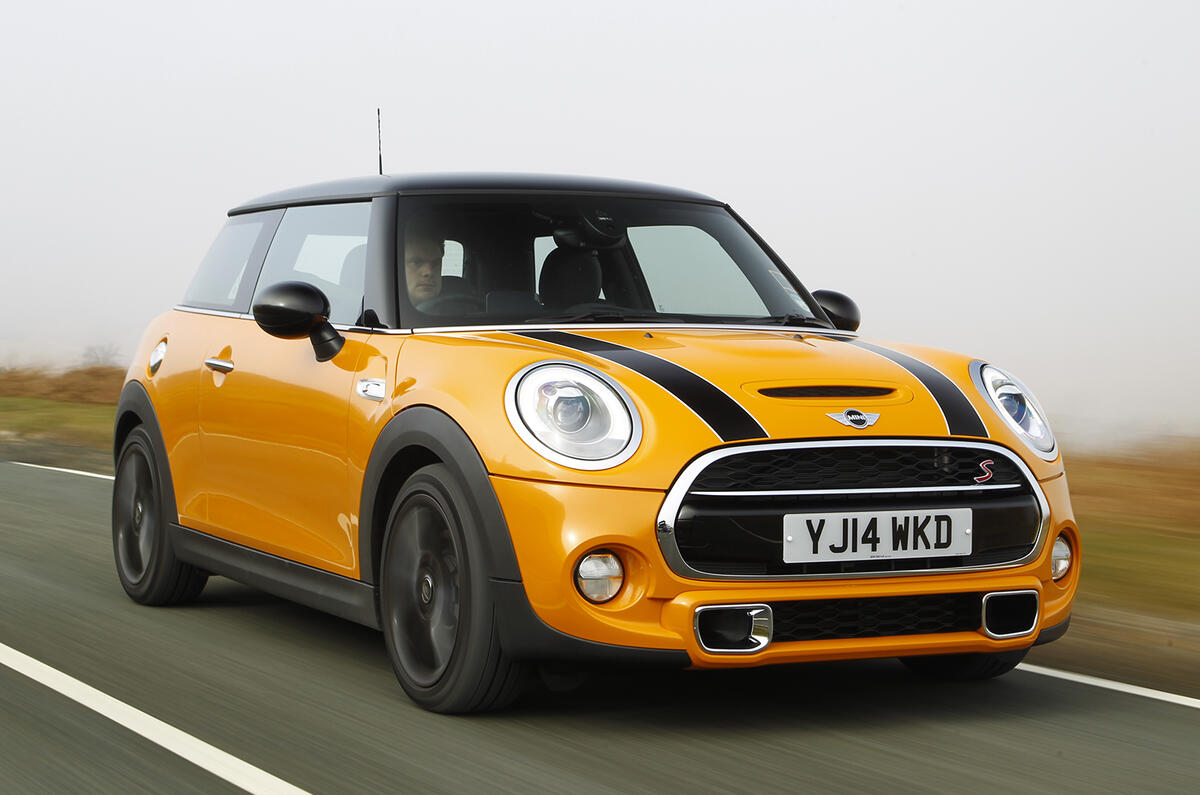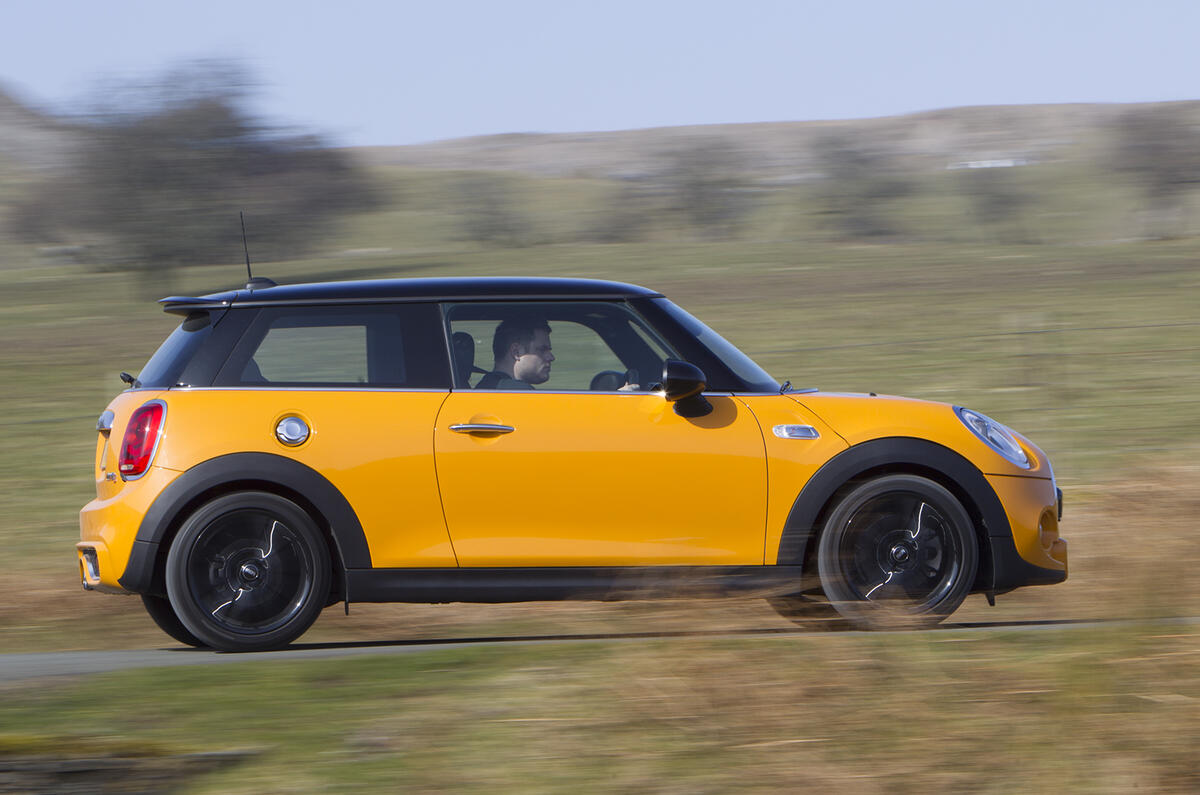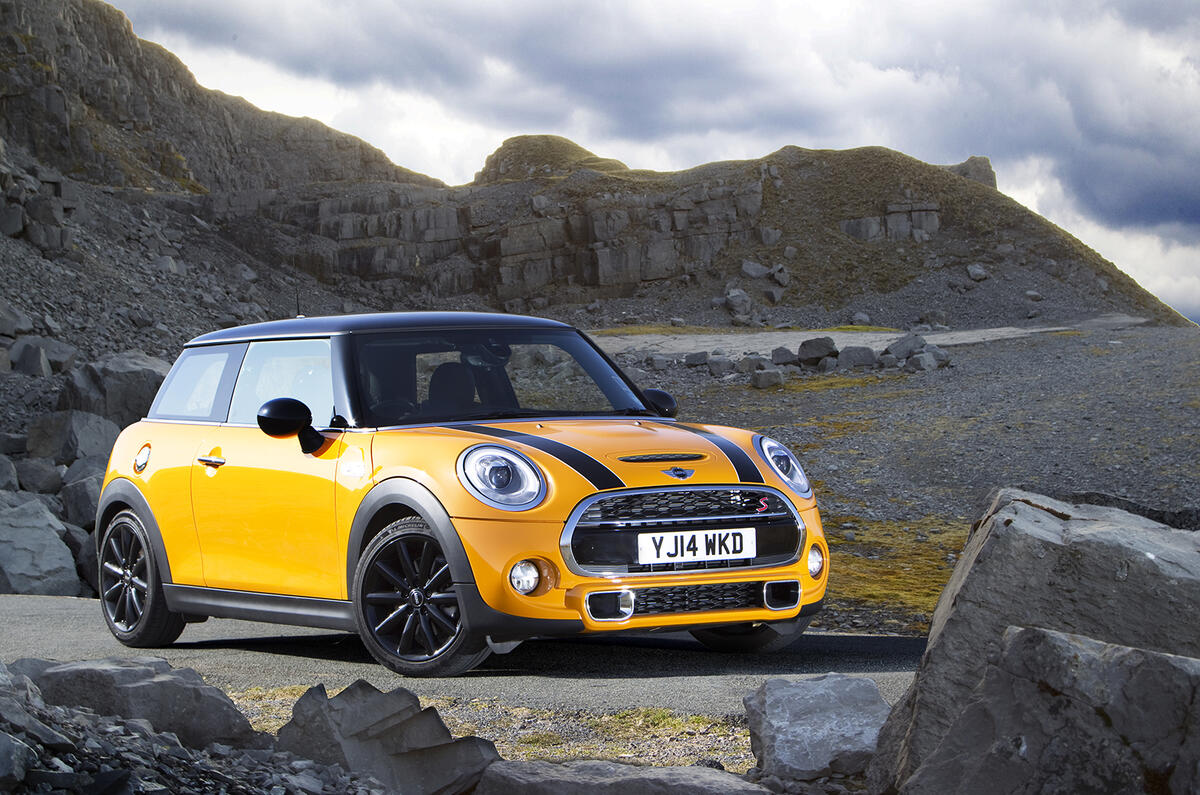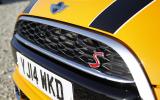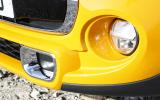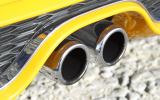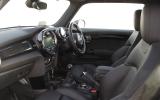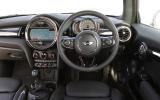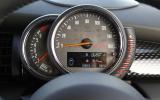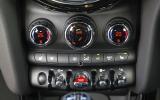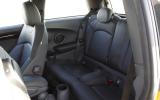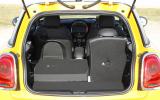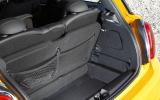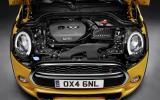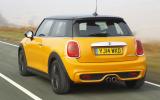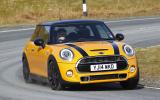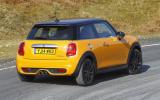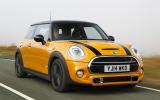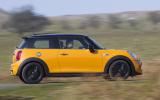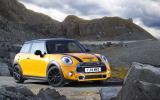Welcome changes abound inside the new Mini – all of which make it more effective, mature and agreeable but not any less characterful. Good ergonomic sense now prevails over forced quirkiness, and few will miss the latter.
Most obviously, the central speedo is gone. The new car has a more conventional speedo mounted on the steering column, with a rev counter and fuel gauge either side. Given that both are easier to read because they’re closer to your eyeline, they are significant improvements. We’d rather the fuel gauge was analogue, but it’s a fairly insignificant gripe.
Electric window switches and door lock toggles are now on the door console rather than low on the centre stack. The climate controls are easier to fathom, too. As a whole, the car is just easier to interact with.
It’s roomier, too. There’s greater shoulder room, better underthigh support from the seats and more kneeroom in a wider driver’s footwell. There’s a bit of pedal offset – annoying in a brand new car – but overall you feel much more comfortable here than in any previous Mini.
Which is all the good news most Mini owners will have wanted to hear. Further back in the car, the improvements get steadily less remarkable. The back seats, though bigger, are still small by supermini standards, and the boot, while larger, still won’t swallow bulky items.
But the boot is at least more cleverly packaged, and you wouldn’t want it, or the back seats, any bigger if it meant adding size to the car. Minis should be small, after all, although whether this one is small enough is a matter for personal judgement. It does at least balance interior space against exterior footprint quite well.
Each Mini is relatively well-equipped, with the entry-level One models come with steel wheels, hill start assist, heated and electrically adjustable wing mirrors, keyless entry and ignition, DAB radio and access to Mini's teleservices as standard. Choose a Cooper trimmed Mini and you get 15in alloy wheels and body coloured wing mirror caps added to the package, while Cooper S models acquire 16in alloy wheels, a unique cloth upholstery, air conditioning, a dual-exhaust system, a bonnet scoop, an LED light ring around the central display, a leather clad sports steering wheel and a sports front seats. Air conditioning is available as a no-cost option on the Mini One and Cooper - a box we recommend ticking.
John Cooper Works Minis get more of a makeover than a wealth of additional equipment. Most noticeable is the beefy body kit, which sees large air intakes on the front, and the addition of lightweight alloys. Inside there is a Dinamica upholstery, lots of JCW badging and red stitching and sports seats included as standard, alongside LED headlights, sports suspension and adaptive cruise control. Those keen to snap up a 1499 GT will only get the choice of black or white, with exclusive decals fitted down the sides, and also comes with 17in alloys and Mini's John Cooper Works Chili pack as standard.
As has become accustom with the Mini buying process under BMW's ownership, ticking options has been made simpler through six packs. Those buying a Mini One or Cooper can opt for the Pepper pack, which adds 16in alloy wheels, a sports steering wheel, floor mats, dual-zone climate control, auto lights and wipers, and height adjustable front seats to the hatchback. Mini Cooper and Cooper S owners can opt for the better endowed Chili pack which adds 17in alloys, a multi-function steering wheel, sports front seats, LED head and fog lights, and a part leather upholstery. Those wanting a sporty JCW looking Mini 3dr hatch can tick the John Cooper Works Chili pack which adds 17in lightweight alloys, a beefy bodykit and sports suspension.
The other two packs, we believe are strongly worth considering when speccing up your Mini 3dr hatch are the Media Pack XL, which adds chiefly sat nav, USB connectivity and enhanced Bluetooth, and the Hatch Tech Pack, which adorns the Mini with rear view camera, rear parking sensors, head-up display, and a Harman Kardon stereo system.
Cars fitted with the optional Media Pack feature an 8.8in screen and the latest BMW iDrive (with a Mini user interface). Even without it, hands-free connectivity is standard, and linking a phone is easy. USB and aux-in complete the default inputs, while Mini Connected (another option) adds social media capability via a phone’s internet connection.
The full Mini Navigation System XL is part of the Media Pack. It offers not only the quickest route but also the most fuel efficient, while checking the weather, helping you avoid jams and finding a place to park. This tried and tested BMW tech makes it both intuitive and polished.


